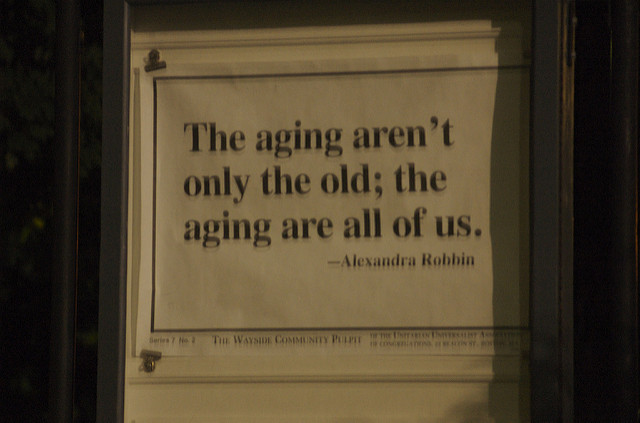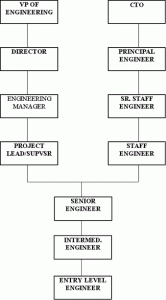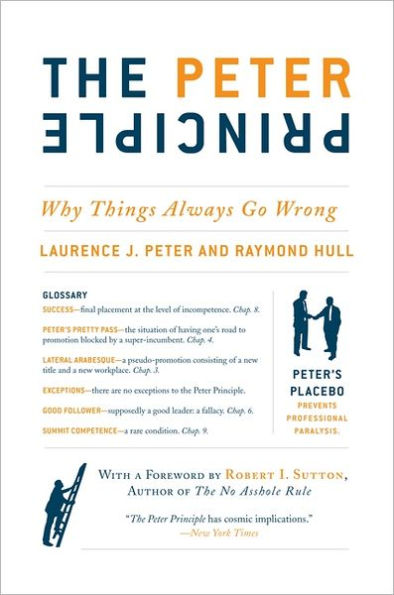|
|
|
Archive for the 'Hiring' Category
Friday, December 14th, 2018

A Friday series exploring Startups and the people who make them go. Read all If the Shoe Fits posts here.
For years the media has been proclaiming that the great majority of young people want to be entrepreneurs or work for a startup, as opposed to a larger/older company, because startups were “cool.”
Now it looks like their ardor is what’s cool, as in cooled off.
Research suggests entrepreneurial activity has declined among Millennials. The share of people under 30 who own a business has fallen to almost a quarter-century low, according to a 2015 Wall Street Journal analysis of Federal Reserve data. (…) Two years ago, EIG’s president and co-founder, John Lettieri, testified before the U.S. Senate, “Millennials are on track to be the least entrepreneurial generation in recent history.”
What changed?
Maybe they learned that wanting to and doing it are very different. That they will work far harder for themselves, even if they are well-funded, or that startups fail far more often than they succeed (90% vs 10%).
A survey of 1,200 Millennials conducted in 2016 by the Economic Innovation Group found that more Millennials believed they could have a successful career by staying at one company and attempting to climb the ladder than by founding a new one.
But maybe there is something else going on.
Maybe they have figured out that the world doesn’t need another social network / dating app / review site / etc.
Maybe investors have realized that monetizing through ads isn’t a good road to sustainable profitability, considering the push for more European-style privacy.
Or maybe, just maybe, reality has reared its ugly head and they’ve figured out they don’t have enough experience or know enough to create enterprise solutions for real-world needs.
Matt Krisiloff, the former Y Combinator executive, added that the opportunities “to start compelling start-ups,” for college students without industry-specific knowledge, “has vastly shrunk.”
Maybe they aren’t all looking for a safe harbor in the next downturn (there aren’t any), but for the experience that will ground their startup in their 40s, 50s and beyond.
What they found is that the average age of a startup founder is about 41.9 years of age among all startups that hire at least one employee, and among the top 0.1 percent of highest-growth startups, that average age moves up to 45 years old. Those ages are taken from the time of the founding of the company.
Maybe our media-inspired view of entrepreneurs is a reflection of the warped views of Silicon Valley as engendered by VCs.
VCs believe they have “pattern recognition” abilities that they simply don’t have. Instead, they rely on suppositions and stereotypes that don’t match the underlying data on startup success. The same reason why older founders are ignored by the ecosystem is the same reason why women and other minorities struggle in the Valley: It’s really not about what you build, but what you look like while building it.
Maybe the entrepreneurs of the future will look more like our real world in all its diverse, messy glory.
And a final “maybe.”
Maybe there is room to hope.
Image credit: HikingArtist
Posted in Entrepreneurs, Hiring, If the Shoe Fits, Motivation | No Comments »
Tuesday, December 11th, 2018

Do you hire based on grades and/or the college attended?
If so, give yourself an F — for being a hiring dinosaur and ignoring the data.
Way back in the 1980s, when I was a tech recruiter, one of the best/smartest engineering vps I ever worked with told me he didn’t care about GPAs or college attended. He said that the value of a technical degree lost approximately 20-25% of its value each year, because the tech world changed so fast.
He also said that grades were more the result of a good memory and the ability to regurgitate information on demand than actual knowledge.
Fast forward to Adam Grant’s most recent column. Grant is one of the smartest people I read and I read a lot. Not because he has a PhD, but because he has more common sense than almost any other three (four? five?) combined.
The evidence is clear: Academic excellence is not a strong predictor of career excellence. Across industries, research shows that the correlation between grades and job performance is modest in the first year after college and trivial within a handful of years. (…)
Academic grades rarely assess qualities like creativity, leadership and teamwork skills, or social, emotional and political intelligence.
Take a good look at that list. It encompasses all the skills that bosses, no matter their level, claim they want, but frequently pass on.
Why? Because candidates with those qualities don’t as easily “fit” into rigidly framed jobs.
Whereas one thing that can be said for straight A students is that they are expert at coloring inside the lines, so are usually easier to manage.
Getting straight A’s requires conformity. Having an influential career demands originality.
“Valedictorians aren’t likely to be the future’s visionaries,” Dr. Arnold explained. “They typically settle into the system instead of shaking it up.”
Moreover, hiring with the assumption that you can reshape their embedded code when it is convenient for you is totally unfair and sets you both up for frustration, at the least, or outright failure.
This might explain why Steve Jobs finished high school with a 2.65 G.P.A., J.K. Rowling graduated from the University of Exeter with roughly a C average, and the Rev. Dr. Martin Luther King Jr. got only one A in his four years at Morehouse.
So the when you go to fill your next opening give serious thought to what you are really looking for.
Image credit: Adam Grant
Posted in Ducks In A Row, Hiring, Personal Growth | No Comments »
Tuesday, December 4th, 2018

In case you hadn’t noticed the fertility rate is dropping, the world’s population is aging and it’s happening in a way that will forever change the workplace.
Back in 2010, Standard & Poor’s predicted that the biggest influence on “the future of national economic health, public finances, and policymaking” will be “the irreversible rate at which the world’s population is aging.”
As usual, our governments at all levels are doing little more than funding studies, wringing their hands and making dire predictions. In all likelihood they will continue doing more of the same, since constructive efforts would require bipartisan cooperation, and politicians aren’t known for their willingness to bite unpopular bullets — as our country’s aging/decrepit infrastructure proves.
Companies, by contrast, are uniquely positioned to change practices and attitudes now. Transformation won’t be easy, but companies that move past today’s preconceptions about older employees and respond and adapt to changing demographics will realize significant dividends, generating new possibilities for financial return and enhancing the lives of their employees and customers.
Companies might be in a better positioned, but rampant cognitive bias, whether unconscious or conscious, often prevails, resulting in a preference for hiring “people like me.”
Soon, the workforce will include people from as many as five generations ranging in age from teenagers to 80-somethings.
Are companies prepared? The short answer is “no.” Aging will affect every aspect of business operations — whether it’s talent recruitment, the structure of compensation and benefits, the development of products and services, how innovation is unlocked, how offices and factories are designed, and even how work is structured — but for some reason, the message just hasn’t gotten through.
So forget companies.
Current bosses, as well as bosses-to-be, have the great advantage of being able to do it now themselves, rather than waiting for their companies to act.
And it’s to their advantage, assuming they want to keeping their teams humming, well-staffed and highly productive.
But, depending on your MAP (mindset, attitude, philosophy™), don’t expect it to happen overnight or minimize the amount of work that may be required.
To get started, click the link at the link. It will take you to a seven part series in the Harvard Business Review called The Aging Workforce. It’s probably the fastest way to wrap your mind around what’s happening in all its complexity — or at least a lot of it.
And join me tomorrow for a closer look at cognitive bias, which affects the entire human race — including you and me.
Image credit: Justin Henry
Posted in Culture, Hiring, Personal Growth, Retention | No Comments »
Tuesday, November 20th, 2018

Your life.
Profiled in data.
With or without your permission.
Collected and sold to anyone.
Much of it done by your best friend Facebook.
For years.
When Facebook was challenged?
It took a traditional approach.
The next time, leadership denied and denied and denied.
When that didn’t work they again lied and lied and lied.
Then they hired a PR firm that essentially poured gasoline on burning waters.
And while Facebook is clearly the poster child for data misuse, Google, Amazon and Microsoft aren’t exactly on the side of the angels.
Politicians on both sides are weighing in, but, considering the money involved in US-approved corruption, AKA, lobbying, that effort is unlikely to move forward anytime soon.
One question comes to mind.
Is there anything more valuable than data?
The answer is yes.
Talent.
And the talent isn’t happy.
“Increasingly — and especially given the political environment — a key part of this consideration for workers has become the moral and ethical implications of the choices made by their employers, ranging from the treatment of employees or customers to the ethical implications of the projects on which they work. This is especially true given the central role of ‘big tech’ in new fears about information, rights, and privacy and the growing feeling that a lack of oversight in this sector has been harmful.” –Prasanna Tambe, Wharton professor of operations, information and decisions
In fact, the hiring luster isn’t just thin, it’s becoming nonexistent.
“Before it was this glorious, magical thing to work there,” said Jazz Singh, 18, also studying computer science. (…) As Facebook has been rocked by scandal after scandal, some young engineers are souring on the company.
“Employees are wising up to the fact that you can have a mission statement on your website, but when you’re looking at how the company creates new products or makes decisions, the correlation between the two is not so tightly aligned,” said David Chie, the head of Palo Alto Staffing, a tech job placement service in Silicon Valley. “Everyone’s having this conversation.”
“They do a lot more due diligence,” said Heather Johnston, Bay Area district president for the tech job staffing agency Robert Half. “Before, candidates were like: ‘Oh, I don’t want to do team interviews. I want a one-and-done.’” Now, she added, job candidates “want to meet the team.”
“They’re not just going to blindly take a company because of the name anymore.”
The criticism by Google employees played out much more publicly.
More than 20,000 employees and contractors walked out of Google’s offices around the world Thursday, Nov. 1, organizers said. The group is protesting sexual harassment, misconduct, lack of transparency, and a non-inclusive workplace culture.
So.
Perhaps “we, the people” will have more force in the corporate world than it does elsewhere.
Image credit: Image credit: Marco Paköeningrat
Posted in Communication, Culture, Ethics, Hiring, Retention | No Comments »
Tuesday, October 2nd, 2018

I’ve made my own hiring errors, as have we all (anyone who claims otherwise is lying).
So when interviewing, we have a few company-wide mantras (for lack of a better term) to guide us.
I find this one goes a long way to ensuring we don’t get caught up in people’s past, rather, it helps us focus on attitude and potential.
“The main ingredient of stardom is the rest of the team.” — John Wooden, basketball player and coach
Look at all the people who were stars at places like Goldman Sachs or Google, such as Marissa Meyer, or GE’s Bob Nardelli (who nearly destroyed Home Depot), who were unable to maintain their level of performance outside the culture, systems and management of that specific company.
That’s why it’s always dangerous to hire stars — more than anything else they are a product of their environment.
Image credit: Lee Haywood
Posted in Culture, Ducks In A Row, Hiring | No Comments »
Monday, September 24th, 2018

Poking through 11+ years of posts I find information that’s as useful now as when it was written.
Golden Oldies is a collection of the most relevant and timeless posts during that time.
You can not imagine the thrill when I see the stuff I passionately believe in mirrors the beliefs of people I hold in high regard, such as Fred Wilson, who knows and has experienced far more than I ever will. It’s a definite high.
Read other Golden Oldies here.
A few days ago Fred Wilson wrote about the importance of culture and fit.
Some entrepreneurs and CEOs buy into “hire the best talent available” mantra. That can work if everything goes swimmingly well. But as I said, it often does not, and then that approach is fraught with problems. The other approach is hire for culture and fit. That is the approach I advocate.
That’s the same approach I’ve advocated for decades.
What many forget is that “the best talent available” refers to whoever will perform best in your culture as part of your team and focus on your company’s success.
Too many founders, CEOs, other execs and even lower level managers seem to hire for bragging rights instead.
I wrote about hiring and culture here last Sept and included a link to an article I wrote for MSDN way back in 1999 that explained how to use your culture as a screening tool when hiring.
I’ve always told clients that the fastest way to success is to always hire the right person at the right time and for the right reasons.
Good hiring is like cooking Chinese—80% of the time used is spent prepping and the balance doing.
There really are no shortcuts; especially not hiring other people’s stars.
Not to sound self-serving, but I’ve been surprised at how closely the ideas I’ve always believed in parallel Wilson’s thoughts.
Image credit: HikingArtist
Posted in Golden Oldies, Hiring | No Comments »
Friday, September 21st, 2018

A Friday series exploring Startups and the people who make them go. Read all If the Shoe Fits posts here.
The mindset many founders look for. Sadly, they aren’t the only ones.

Can AI analyze MAP as well it does other qualifications?

Image credit: HikingArtist, Unknown, very old Dilbert
Posted in Hiring, If the Shoe Fits | No Comments »
Thursday, September 20th, 2018

I recently made a career change that, so far, has been extremely positive.
I have been in the tech space for some time and enjoy it. However, I think I carry a bit of baggage when I go to new companies.
By that I mean I have had employers in the past who were truly miserable to work for. I dreaded going in each day and my motivation was very low.
When I look at new companies I tend to carry that frame of reference with me as I interview. I consider the culture, how would I like the boss, how do people act in the office?
I have been interviewing for a few months now, at a variety of companies, and I have seen a few that make me want to run!
I’m in sales and whenever I hear a company say that they don’t have a process in place and just want somebody who’s hungry, I think red flag.
Obviously you want to be engaged and hard working in sales, but I have found that organizations that have no formal process in place are just flying by the seat of their pants.
It’s hard to define success, there is little support for you and if you don’t hit your numbers you are out right away.
I also spoke with a company that recently received an influx of VC money. As a result they have hired 70+ sales people all at once. Big red flag! How do you manage that? What metrics are defining success? How many people are on quota? None of that could be answered, so I stopped that interview process right away.
At the end of the day I found a company that is doing some really cool things in the GIS space. They are growing, own their IP, have a huge customer base and the co-workers are truly kind and passionate about their roles and product.
The benefits were awesome, but at the end of the day I asked myself, could I be here for 8 hours a day and still want to come back the next day?
For me the answer was yes.
Image credit: Bs0u10e0
Posted in Culture, Hiring, Personal Growth, Ryan's Journal | 1 Comment »
Wednesday, September 19th, 2018

Hiring is one of the things where the “move fast and break it” mantra can cause real damage, including blowing product release schedules and, in extreme cases, blowing holes in your team or even destroying it.
A couple of yesterday’s links offered ways to avoid the Peter Principle when hiring, here are some others.
- Analyze your openings and identify the attitudes needed to perform and be successful in your company, not the experience. Just because they have held a similar position previously doesn’t mean they did it well. And even if they did, the ability may not carry over with a different boss and/or culture.
- Interview for attitude above experience and don’t rule out someone who hasn’t held a similar position — at some point every boss became one via promotion.
- Managing is composed of various skills; in that respect it is no different than any other specialty, such as engineering, marketing or finance. Supply training/coaching to anyone promoted to management; nobody is born knowing how, nor is it taught particularly well in college.
- Find ways to reward exceptional effort beyond promotion to a position that isn’t aligned with ability and interests. When people know there are financial/prestigious alternatives to management they are more likely to speak up when offered a promotion they don’t really want. The image above shows one approach that has been successful in technical and nontechnical fields, because the compensation between pairs is equal on each level.
As in most cases, to change results, change how you think.
Image credit: RampUp Solutions
Posted in Compensation, Hiring, Retention | No Comments »
Tuesday, September 18th, 2018

Yesterday I mentioned the Peter Principle, by Laurence J. Peter, a prominent Canadian education scholar. It prompted a call from a young (23) friend asking how accurate it is now, considering it was written nearly 50 years ago .
It wasn’t that “Ben” disagreed with the premise, especially considering his boss, he just thought that there should be more current information.
And there is. So for Ben and others who wonder, here are links to more current information and research in chronological order.
First is Bob Sutton’s marvelous foreword written for the Principle’s 40th anniversary edition in 2009.
My father loved The Peter Principle because it explained why life could be so maddening—and why everyone around you seems, or is doomed to become, incompetent.
Second, in August, 2014, from Rob Asghar, a good, somewhat depressing, overview of the book, along with a few words of hope.
We’re human, in the end. The Tony Robbins types try to sell us the life-hacks, the superfood diets, the meditation techniques and the mantras to transfigure us from mortal to immortal. That only sets us up to fail in a different and delusional way.
Next, in December, an article in HBR looked at the Principle from the other side — and it only took ten years to happen.
This seems surprising since of course every manager is a subordinate as well. And indeed in The Subordinate’s Predicaments, Case Western Reserve management professor Eric Neilsen and then-doctoral candidate Jan Gypen make that point explicitly.
In April this year, Rodd Wagner described research that proved the Principal was indeed real and ways to circumvent it. Although the research focuses on sales, it is applicable to any career field.
Three professors – Alan Benson of the University of Minnesota, Danielle Li of MIT and Kelly Shue of Yale – analyzed the performance of 53,035 sales employees at 214 American companies from 2005 to 2011. During that time, 1,531 of those sales reps were promoted to become sales managers.
I hope this info (and I’m sure there is plenty more for the searching) is useful to Ben and all those like him, who are either struggling with a very real Peter Principle boss or working hard to avoid becoming one.
Image credit: Barnes and Noble
Posted in Hiring, Motivation, Personal Growth | 1 Comment »
|
 Subscribe to
Subscribe to
MAPping Company Success
About Miki 
Clarify your exec summary, website, etc.
Have a quick question or just want to chat? Feel free to write or call me at 360.335.8054
The 12 Ingredients of a Fillable Req
CheatSheet for InterviewERS
CheatSheet for InterviewEEs™
Give your mind a rest. Here are 4 quick ways to get rid of kinks, break a logjam or juice your creativity!
Creative mousing
Bubblewrap!
Animal innovation
Brain teaser
The latest disaster is here at home; donate to the East Coast recovery efforts now!
Text REDCROSS to 90999 to make a $10 donation or call 00.733.2767. $10 really really does make a difference and you'll never miss it.
And always donate what you can whenever you can
The following accept cash and in-kind donations: Doctors Without Borders, UNICEF, Red Cross, World Food Program, Save the Children
*/
?>About Miki
About KG
Clarify your exec summary, website, marketing collateral, etc.
Have a question or just want to chat @ no cost? Feel free to write
Download useful assistance now.
Entrepreneurs face difficulties that are hard for most people to imagine, let alone understand. You can find anonymous help and connections that do understand at 7 cups of tea.
Crises never end.
$10 really does make a difference and you’ll never miss it,
while $10 a month has exponential power.
Always donate what you can whenever you can.
The following accept cash and in-kind donations:
|















